The city of Beaune, considered the "Capital of Burgundy Wines," sits at the heart of the Côte d'Or department in Eastern France, on the
Route des Grands Crus. It is surrounded by villages and small towns where vintners cultivate grapes that produce the world-renowned wines of Burgundy.

Although there are no Grand Cru vineyards in Beaune, many of the vats and cellars where wines are fermented and aged are located within the city. It is a hub for the wine industry, with suppliers of tractors and other wine-making equipment located here, as well as a number of wine-related institutes and associations. It is also headquarters for many
négociants, the wine merchants who purchase the products of smaller growers and winemakers, to be bottled and sold under a larger domaine's label.

Beaune is an ancient city, whose settlement pre-dates Roman times. Its history continues through the Middle Ages and Renaissance, and survives today, with about half of the battlements, ramparts, and moat of the Medieval walled city remaining intact.
A major attraction for visitors to Beaune is
L'Hôtel-Dieu, a hospital and refuge for the poor, which received its first patient on January 1, 1452, and has welcomed the elderly, disabled, and sick for treatment from the Middle Ages through the present. Its beautiful patterned tile roof, a style unique to the Burgundy region, offers a wonderful opportunity for photography, as does the interior, with breathtaking stained glass and ornate woodwork.
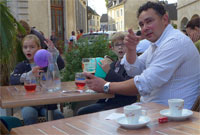
The older section of the city features a cluster of shops and cafés around the central square. Shop here for wine (of course!), as well as other gourmet French treats, and fashionable clothing. An afternoon stroll to window-shop, stopping at an outdoor cafe for a pick-me-up, provides great entertainment in itself.
Beaune's Saturday market is a major event. Vendors spill out from the
Les Halles covered market into the pedestrian area outside
L'Hôtel-Dieu. Inside, the market stalls are heaped with the freshest seasonal produce, cheeses, fish, and baked goods — a true feast for the senses.
Learn more about barge cruises that include a visit to Beaune at
Boutique Hotel Barges.
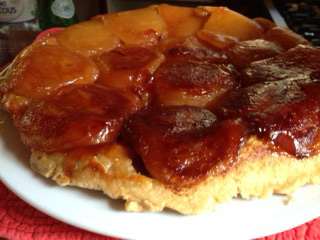
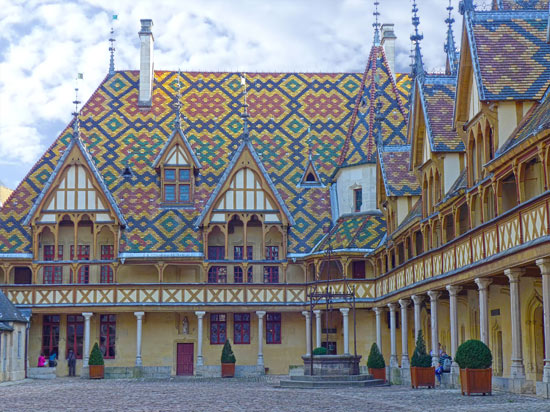
 Although there are no Grand Cru vineyards in Beaune, many of the vats and cellars where wines are fermented and aged are located within the city. It is a hub for the wine industry, with suppliers of tractors and other wine-making equipment located here, as well as a number of wine-related institutes and associations. It is also headquarters for many négociants, the wine merchants who purchase the products of smaller growers and winemakers, to be bottled and sold under a larger domaine's label.
Although there are no Grand Cru vineyards in Beaune, many of the vats and cellars where wines are fermented and aged are located within the city. It is a hub for the wine industry, with suppliers of tractors and other wine-making equipment located here, as well as a number of wine-related institutes and associations. It is also headquarters for many négociants, the wine merchants who purchase the products of smaller growers and winemakers, to be bottled and sold under a larger domaine's label. Beaune is an ancient city, whose settlement pre-dates Roman times. Its history continues through the Middle Ages and Renaissance, and survives today, with about half of the battlements, ramparts, and moat of the Medieval walled city remaining intact.
Beaune is an ancient city, whose settlement pre-dates Roman times. Its history continues through the Middle Ages and Renaissance, and survives today, with about half of the battlements, ramparts, and moat of the Medieval walled city remaining intact. The older section of the city features a cluster of shops and cafés around the central square. Shop here for wine (of course!), as well as other gourmet French treats, and fashionable clothing. An afternoon stroll to window-shop, stopping at an outdoor cafe for a pick-me-up, provides great entertainment in itself.
The older section of the city features a cluster of shops and cafés around the central square. Shop here for wine (of course!), as well as other gourmet French treats, and fashionable clothing. An afternoon stroll to window-shop, stopping at an outdoor cafe for a pick-me-up, provides great entertainment in itself.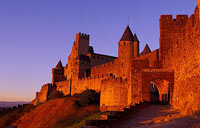 Historic Cité de Carcassonne is a UNESCO World Heritage site. The city rests on a hill overlooking the Aude Valley, and has served as a fortified settlement since prehistoric times. Carcassonne occupies a strategic location, along the ancient routes linking the Atlantic and Mediterranean. It was been held by or ruled over by many different groups throughout history. The earliest occupation of the site dates to the 6th century BC. Romans fortified the hilltop around 100 BC and occupied the area until the fall of the Roman Empire in western Europe. The fortification was taken over in the fifth century by the Visigoths, who founded the city. Carcassonne gained notoriety in the 13th century as a stronghold of Occitan Cathars, before they were defeated by Simon de Montfort.
Historic Cité de Carcassonne is a UNESCO World Heritage site. The city rests on a hill overlooking the Aude Valley, and has served as a fortified settlement since prehistoric times. Carcassonne occupies a strategic location, along the ancient routes linking the Atlantic and Mediterranean. It was been held by or ruled over by many different groups throughout history. The earliest occupation of the site dates to the 6th century BC. Romans fortified the hilltop around 100 BC and occupied the area until the fall of the Roman Empire in western Europe. The fortification was taken over in the fifth century by the Visigoths, who founded the city. Carcassonne gained notoriety in the 13th century as a stronghold of Occitan Cathars, before they were defeated by Simon de Montfort.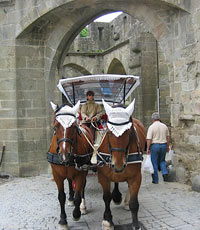 Today Carcassonne provides a wonderful experience for visitors who walk the narrow, car-free streets and tour the restored battlements at the heart of the old city. Carcassonne is home to several one- and two-Michelin-starred restaurants, an abundance of cafés, as well as enough boutiques and shops to fill the afternoon with exciting retail opportunities. For a unique before- or after-cruise stay, try one of the hotels located within the walls of the old city.
Today Carcassonne provides a wonderful experience for visitors who walk the narrow, car-free streets and tour the restored battlements at the heart of the old city. Carcassonne is home to several one- and two-Michelin-starred restaurants, an abundance of cafés, as well as enough boutiques and shops to fill the afternoon with exciting retail opportunities. For a unique before- or after-cruise stay, try one of the hotels located within the walls of the old city.